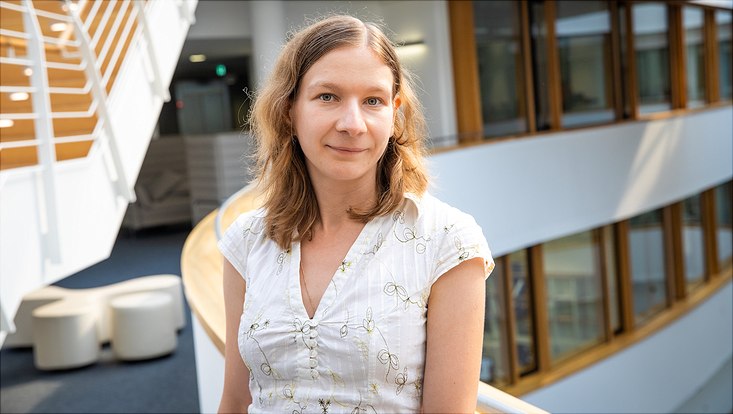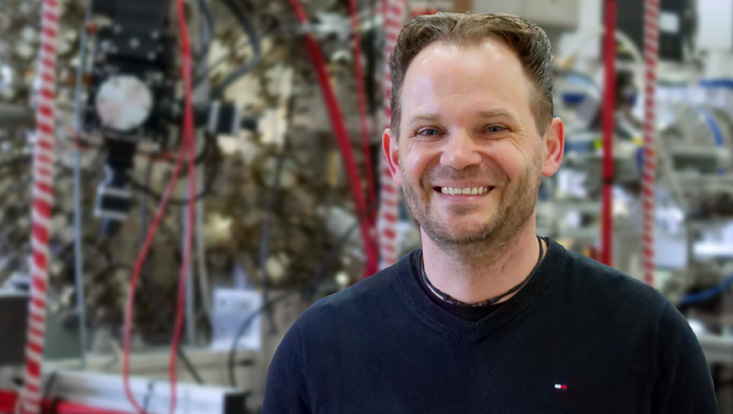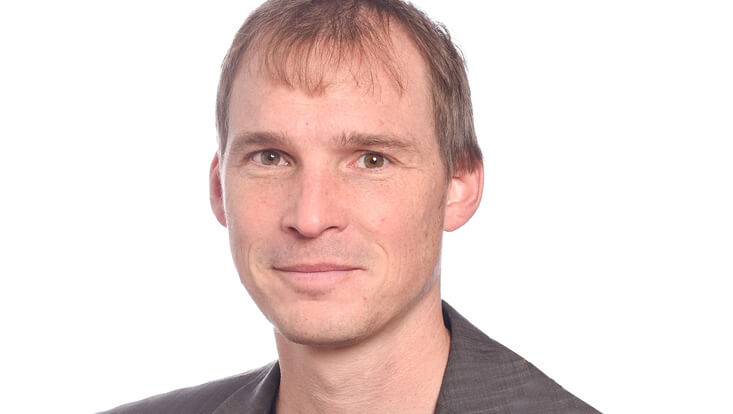Imaging of Matter
Prof. Daria Gorelova: Seeing excitons in motion
27 April 2021

Photo: UHH/Ohme
In April 2020, Daria Gorelova accepted a junior professorship focusing on "Observing the motion of excitons" at the University of Hamburg. Since June 2020, she has also been conducting research as a Young Investigator in the Cluster of Excellence "CUI: Advanced Imaging of Matter".
Prof. Daria Gorelova studied physics and applied mathematics at the Moscow Institute of Physics and Technology, received her PhD from Forschungszentrum Jülich and defended her PhD at RWTH Aachen University. In 2013, she moved to the Center for Free-Electron Laser Science in Hamburg and did postdoctoral research in the CFEL-DESY theory group of Prof. Dr. Robin Santra. She studied how ultrafast processes in solids and molecules can be characterized with the special X-ray light that can be generated by free-electron lasers such as the European XFEL in Hamburg.
In 2019, Daria Gorelova received a Freigeist Fellowship from the Volkswagen Foundation with funding of around 1.2 million euros for six years and has since been leading a research team at the University of Hamburg. Together, the researchers are investigating how ultrashort x-ray pulses can measure the dynamics of excitons: excitons are special electronic states that are of relevance for converting light into electricity. After sunlight interacts with a photovoltaic material, excitons transport energy from light to convert it to the electricity. In the framework of the Volkswagen Foundation's Freigeist Fellowship project "Seeing excitons in motion", Prof. Gorelova is developing novel techniques to measure dynamics of excitons on atomic scale. A precise understanding of the formation and motion of excitons is particularly important for the development of new materials for converting light into electricity.
The Volkswagen Foundation's Freigeist Fellowships are aimed at exceptional research personalities who move between established research fields and wish to pursue high-risk science. In addition, Daria Gorelova was invited to the „Lindau Nobel Laureate Meetings“.
Professor Gorelova, you studied physics and applied mathematics in Moscow. How did this choice of studies come about?
When I was at school, I enjoyed these subjects the most. I decided to study in the Moscow Institute of Physics and Technology, because it is one of the best Russian Universities and the first-ranked Russian University in physical sciences. They have a low acceptance rate, but I passed the entrance exams to be accepted to study there.
Who has had a particular influence on you? Do you have any role models?
Both of my parents are physicists and are very enthusiastic about their job. This motivated me to become a scientist as well.
Who or what then led you to Jülich, and later to Hamburg?
When I was a teenager, I lived in Germany for a year, because my farther was a guest scientist in Mainz. I enjoyed the life in Germany and decided to do a PhD here. Since this was the topic of my bachelor and master theses, I searched for a world-leading group in condense-matter theory. I was quite excited by the advanced research in the Quantum Theory of Materials Group in Jülich led by Prof. Dr. Stefan Bluegel and joined that group for the PhD. My project was about ultrafast light-induced magnetization dynamics and this is how I got very interested in the broader topic of ultrafast light-matter interaction. For my postdoc, I searched for an excellent group to continue working on ultrafast processes. I was also very attracted by the idea of CFEL, which combines scientists from three research organizations, who perform research very collaboratively.
I have to develop my career with the dual career challenge and with a small child, which make me not quite mobile. But since CFEL is such a rapidly developing place with so much brilliant research going on, I am getting many opportunities to broaden the scope of my research.
What is special about your research? What fascinates you about excitons?
I am very attracted by the idea of attosecond x-ray pulses that can measure processes on very short time and length scales. I think that there are many different problems in physics, chemistry and biology, where attosecond x-ray pulses can provide completely new information. Behavior of excitons in photovoltaic materials is one of such problems and is also relevant for the society.
What makes a good scientist for you?
A good scientist goes always beyond the boundary.
What are your goals for the next two years?
My goal for the next two years is to develop further my new ideas, get funding for them and extend my research group.


